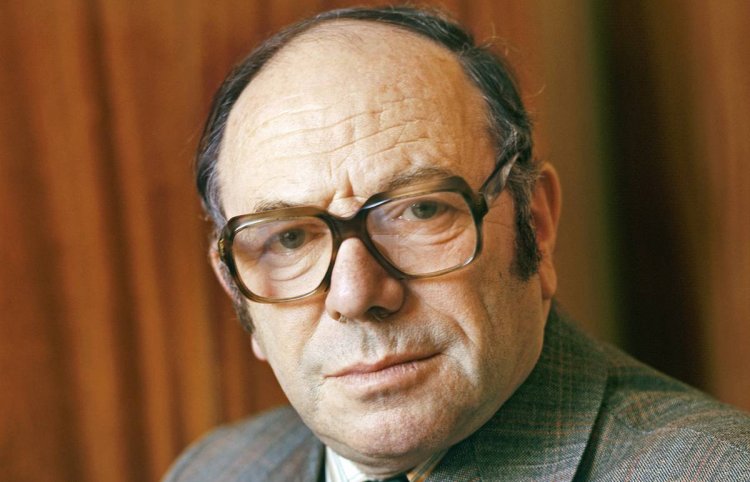Official:
Leonid Vitalyevich Kantorovich. January 6 (19), 1912 – April 7, 1986. Soviet mathematician and economist, one of the founders of linear programming. Laureate of the Stalin Prize, laureate of the Nobel Memorial Prize in Economic Sciences. Doctor of Physics and Mathematics, academician of the Academy of Sciences of the USSR
Life and Work:
1. In the 1950s, Leonid Vitalyevich paid attention to the fact that taxi drivers were reluctant to take orders for short trips. As a result, a fixed start fee was introduced, and the fee for mileage was slightly reduced at his initiative. Winner of the Nobel Memorial Prize in Economic Sciences Leonid Kantorovich is known as the founder of linear programming. In this case, he applied optimization techniques to life.
2. Shortly before the birth of his son, venereologist Kantorovich with his wife, a dentist, and two older children moved from Vilna to Saint Petersburg. A successful doctor bought a plot on Barochnaya Street and built his own house. However, the civil war drove the doctor's family to Belarus for a while. The head of the family died in 1922 leaving 10-year-old Leonid in the care of his mother.
3. The youngest Kantorovich was growing up as a child prodigy. He entered Leningrad University at the age of fourteen. At the age of eighteen, he began to teach students at Leningrad Institute of Railway Engineers. The story goes that, when a young man came to give the first lecture, the students shouted: “Boy, sit down! The teacher will come soon.”
4. At the age of twenty-two, when young people usually just graduate from the university, Leonid Vitalyevich became a professor at Leningrad State University. A year later, Kantorovich became the Doctor of Physics and Mathematics without defending a dissertation.
5. In the late 1930s, Leonid Kantorovich was assigned to advise the plywood trust. The scientist had to develop a way to use machines as efficiently as possible. The mathematician quickly realized that the problem is typical for most enterprises, and, by solving it, one can eradicate many economic problems.
6. In 1939, the scientist published the work The Mathematical Method of Production Organization and Planning. In this work, he described the economic problems that could be solved by the mathematical method discovered by him. In this way, Kantorovich laid the foundations for linear programming.
7. Before the war, Kantorovich was invited to head the Department of Mathematics at the Military Engineering-Technical University. During the war, the scientist took part in the defense of Leningrad. Then he was evacuated to Yaroslavl with the university. During the evacuation, he wrote a textbook on the theory of probability.
8. Upon his return to Leningrad, Kantorovich headed a department at the Institute of Mathematics and Mechanics of Leningrad State University. Kantorovich's group was engaged in calculations for the Soviet atomic project. In 1949, the scientist became a laureate of the Stalin Prize “for his work on functional analysis.”
9. Kantorovich began writing one of his most important works, The Best Uses of Economic Resources, during the evacuation. His seminal work was published in 1959.
10. Since 1960, Kantorovich was working in Novosibirsk: he was one of the first founders of the Siberian branch of the Academy of Sciences of the USSR. In Novosibirsk, Leonid Vitalyevich created and headed the Department of Mathematics and Economics at the Institute of Mathematics of the Siberian Branch of the Academy of Sciences of the USSR and the Department of Computational Mathematics at Novosibirsk University.
11. Not everyone in the USSR approved of the outstanding scientist’s work. A group of colleagues accused him of promoting the pseudoscientific ideas of Vilfredo Pareto, the “Italian fascist” and “Mussolini's favorite.” As a result, Leonid Vitalyevich was placed in a psychiatric hospital, but Nikolay Vitalyevich Kantorovich, a psychiatrist and doctor of medical sciences, managed to get his brother out of the paws of punitive psychiatry.
12. Leonid Kantorovich shared the Nobel Memorial Prize in Economic Sciences, which is unofficially referred to as the Nobel Prize in Economics, with American economist Tjalling Koopmans. The verdict stated: “For their contributions to the theory of optimal resource allocation.”
13. During the last years of his life, Leonid Kantorovich was working at scientific institutes in Moscow. The scientist was buried at the Novodevichy Cemetery.
14. In 1938, remarkable Russian painter Kuzma Petrov-Vodkin painted a portrait of then young scientist Leonid Kantorovich.
15. When Leonid Kantorovich proposed the optimal method to cut a plywood sheet, there were attempts to try this method to cut steel sheets at Leningrad Carriage Works. The consequences of introducing this advanced method were dire. First of all, the system of socialist planning required the plan to be topped in the next year, which was fundamentally impossible, as the solution was optimal. Secondly, the plant did not fulfill the plan for scrap metal, as the amount of waste dropped sharply.
16. The story goes that Kantorovich's wife once complained to academician Fikhtengolts about her husband: he was not adapted to life at all and could not deal with everyday household tasks. “Would you hammer in nails with a gold watch?” the academician asked in response.






















